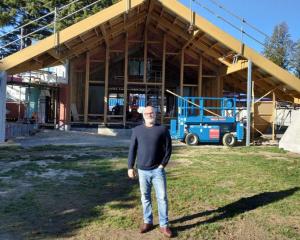New Zealand's unemployment rate has declined this year as businesses kept staff on deck amid an improving economic recovery.
The jobless rate was unchanged at 6.5% in the three months ended June 30 after being revised down 0.1 percentage point in the March quarter, according to Statistics New Zealand's Household Labour Force Survey. That's lower than the 6.6% forecast in a Reuters survey and is down 0.4 percentage points in the past year.
The number of people employed was steady at 2.21 million, and has grown 2% over the past 12 months. Labour force participation fell 0.2 percentage points to 68.4%, as expected, with more people becoming workers.
"Although key labour market indicators remain flat when compared with the March 2011 quarter, annual changes in the number of unemployed and employed show a continued strengthening of the New Zealand labour market," industry and labour statistics manager Diane Ramsay said in a statement.
Westpac Bank chief economist Dominick Stephens said that apart from in Canterbury, it appeared that the New Zealand labour market was "continuing to steadily improve."
"Beneath the surface, there were clear signs of ongoing rapid economic recovery in the wider economy," said Stephens.
He said that the 1.6% increase in hours worked added to the growing body of evidence suggesting that the pace of GDP growth in the second quarter of this year was similar to the first - 0.8%.
The recent 0.8% economic growth number was double that predicted by many economists.
Stephens said that although the data was weak, it would do little to dissuade the Reserve Bank from reversing the 50 basis points 'insurance cut' in the Official Cash Rate in the near term, provided global financial risks receded.
He said that since today's data came in "bang on market expectations", there was little market reaction.
The data comes after wage data earlier this week was slightly weaker than expected, easing pressure on the Reserve Bank to aggressively hike interest rates. Before today's announcement, traders were betting the central bank will lift rates 88 basis points over the coming 12 months, down from more than 100 basis points last week, according to the Overnight Index Swap curve.
Last week, Governor Alan Bollard warned of rising wage pressures, though he talked down the threat of headline inflation, saying the underlying figure was within his target band of between 1% and 3%,
The faster than expected recovery will likely let Bollard remove the emergency stimulus he provided when he cut the official cash rate half a percentage point to 2.5% in March as he dealt with the fall-out of the February earthquake.
Still, Bollard will be watching the rebuild in Canterbury, with today's data showing an additional 6400 people were employed in the construction sector at 171,100.
The data captured the impact of the Canterbury earthquakes, with the number of hours worked falling 1.3% in the 12 months through June. The unemployment rate rose 0.9 percentage points over the year, but was still lower than the national figure at 5.7%.
Education and training sectors added almost 10,000 in the quarter at 206,000, echoing the Quarterly Employment Survey's findings earlier this week. The retail sector continued to struggle in the period, shedding 22,000 people to employ 325,800 in retail trade and accommodation.
Total hours worked in the quarter rose 1.6% in the June quarter to a seasonally adjusted 74.2 million hours, that's the most since June 2008 before the global financial crisis plunged the world into recession.
Full-time employment rose 0.2% in the quarter, while part-time employed declined 0.1%. Full-time employment makes up about 77% of the labour force.
Still, youth unemployment remained significantly higher than the national figure, with 27.6% of 15- to 19-year-olds unemployed and 11.2% of 20- to 24-year-olds out of work.
New Zealand's unemployment rate was the 12th lowest among developed nations, equal with the Czech Republic.












